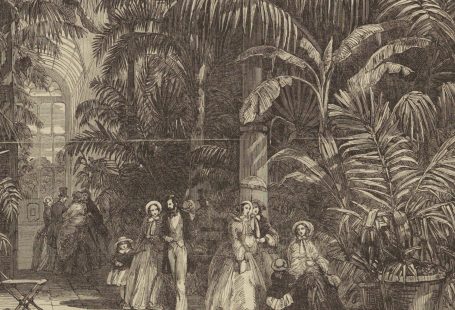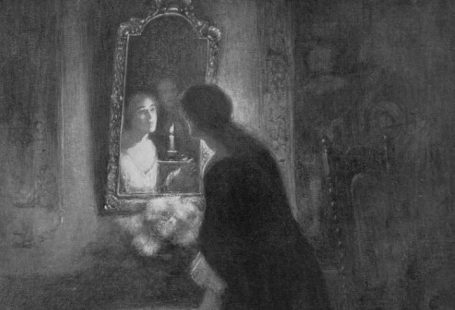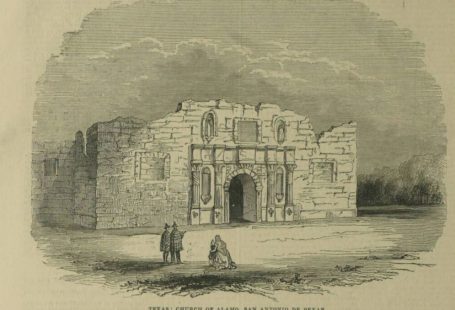Flung into new roles in the armed services and other industries, their home life turned upside down during blackouts and air raids, how did women use makeup during the Second World War?
In this our fourth and final blog looking at the history of makeup, we delve into how makeup was used during the Second World War.
Using pages taken from the British Newspaper Archive, we will discover how women in the three branches of the armed services used makeup, how women adapted their beauty regimes to life on the home front, and how ultimately ‘war or peace makes little difference to women as far as their looks are concerned,’ at least according to the Coventry Herald.
Make-Up for Service Girls
In December 1941 the conscription of women was made legal. By 1943, 90% of single women were working in factories, on the land or in the armed forces, all contributing to the war effort.
In all 640,000 women served in the three branches of the armed forces (the Women’s Royal Naval Service (WRNS), the Women’s Auxiliary Air Force (WAAF) and the Auxiliary Territorial Service (ATS)).

Illustrated London News | 19 April 1941
But were these women, taking on new roles in the military, allowed to use makeup? The Bystander in October 1939 comments how ‘Commandants seldom object to discreet make-up’ and that ‘Yardley’s…are ‘doing their bit’ by planning a special colour series to use with the various uniforms.
Yardley’s had the following suggestions for making-up in uniform:
For all blues, they suggest Natural Rose Lipstick (3s.) and Cream Rouge (2s. 6d.), with English Peach or Rose Rachel Complexion Powder (3s. 6d.). With khaki, Vivid Rouge and lipstick and Deep Peach powder are more flattering.
The Bystander | 11 October 1939
Meanwhile, the Coventry Herald in February 1940 had its own suggestions for service girls:
‘Burnt-sugar’ is the lipstick and nail varnish vogue for girls in khaki. For those who look chic in navy blue the special ‘stop red’ tint is the rage, whilst the young women of the WAAF find themselves catered for with the latest ‘red wood’ colour, which has the advantage of toning admirably with Air Force blue, while remaining inconspicuous.
For many women, wearing makeup whilst in uniform allowed them to retain some of their femininity, and keep their self-expression whilst otherwise bedecked in uniformity.
Miracle Make-Up
And the strictures of a military life saw new demands required of makeup itself. Again, the Coventry Herald reports on a ‘new special all-in-one powder and cream foundation’ lately introduced to the market, which promised to stay on all day long. This would prevent against ‘powdering one’s nose right under the Sergeant Major’s eye…[which] would, after all, be a trifle unbecoming, if not against military regulations!’
Britannia and Eve | 1 July 1945
And makeup manufacturers were quick to answer the needs of women who were thrust into new roles, but still wanted to look good.
The Daily Mirror advertises ‘Miner’s Liquid Make Up’ in May 1941, which is specifically aimed at Land Girls. The incredibly outdated advertising copy runs as follows:
Tractors are tricky till you get the hang of them, and this pretty landgirl has just bowled over a wall. But she won’t get into trouble with the instructor, because she’s bowled him over too – in a different sense. You see, she’s wise. She uses Miner’s Liquid Make Up, the amazing complete wartime make-up in a bottle. You just smooth it on in the morning and it stays matt, fragrant, delicately tinted whatever happens. Heat, cold, wind, rain, air raids, kisses – nothing can disturb this miracle make-up.
Despite the obvious sexism at play – the advert demonstrates how makeup had to adapt to the new responsibilities women held and the dangers they faced during the Second World War.
‘Back to Nature’
But there were also demands for the makeup that women used to be more natural. Victoria Chappelle, writing in the Nottingham Evening Post describes one young man’s reaction to a ‘much-powdered and rouged young woman’ who was sitting down to lunch: ‘Good heavens, why don’t women realise that it’s just bad form to make up to the eyes in war time?’
Meanwhile, ‘Miss Gadabout’ writes in the Sunderland Daily Echo and Shipping Gazette in March 1940 how ‘women are now going to go ‘natural’ and leave behind some of the freakish purplish effects that have been in vogue recently. The idea is to go back to nature with neutral tones and fresh, healthy looking reds for your lipstick and rouge.’
Part of this desire for a natural look stemmed from the new responsibilities women had taken on. For example, an advert for ‘Magnet’ makeup in the Western Mail, March 1940, offers the ‘glorious living-red ‘Magnet’ Lipstick – glowing, but not too exotic for the parade ground.’
Women could wear makeup in their new roles, but as long as it wasn’t too obvious (although bright red lipstick hardly seems the definition of a natural look today!). And some women were actively encouraged to embrace a more natural look, as the firewomen of Number 35 London Area were soon to find out.
‘Lip Reading’ | Britannia and Eve | 1 January 1945
They had been told, according to the Liverpool Daily Post in 1943, that they ‘must not in future use highly coloured nail varnish and [that] their make-up must be ‘discreet.’’ An area official further commented:
We are not discouraging the use of make-up. In fact, we prefer our women to be pretty rather than pasty-faced. But we don’t like them to look like paint pots.
But this natural look was also a direct effect of wartime, as supplies became less plenteous, and an overdone face could be seen as an assault on the wartime economy which had taken over many aspects of daily life.
‘Make-Do Make-Up’
As the war progressed, this so-called ‘make-do make-up’ was the order of the day for many women. And apparently, this was to the taste of the American GIs who made the United Kingdom their temporary home during the conflict.
According to the Liverpool Echo, returning members of the American armed forces were taking ‘some time to get attuned to the ‘pancake’ make-up of the girls they left behind. They have got used to what they call the natural beauty of the English girls and what English girls call their war-time make-do make-up.’
Victoria Chappelle offers some advice on ‘Wartime Makeup’ in the April of 1941, helping women to make what little they had go further:
Powder your lips first, then mark in your upper lip, carefully but not heavily, press both together (this supplies your lower lip with more than enough colour to go on with), rub it all in thoroughly with your little finger and powder lightly again. That’s the technique for wartime. The powdering helps the colour to stay on, so does the finger-tip application. Go slow on the mascara, but put a very little cold cream on your eyelids – it’s good for them, anyway, and will make your eyes look larger.
Britannia and Eve | 1 June 1940
She advises substituting ‘your favoruite rouge’ with a ‘very little lipstick, applied with the invaluable fingertip.’ Meanwhile, a ‘regular weekly dose of almond oil on your face will do it a world of good,’ and oatmeal could be used to keep your ‘skin fresh and fine.’
Blackout Beauty
Women also faced (as did the rest of the population) the disruption caused by blackouts and air raids. But the newspapers of the time were on hand to provide useful tips and tricks to navigate one’s beauty routine during a time of total war.
Molly Drake, writing for the Chichester Observer in late 1939, describes the challenges faced by women under blackout restrictions:
Black-outs! They bring a problem that the ARP has not anticipated! A beauty problem of a special kind! For women are discovering that it is not a simple business to get make-up on correctly in a room that is but dimly lighted. Too much face powder is likely to be applied in one’s zeal to look nice in spite of the war. Then, later, in the brighter lights of the drawing room or elsewhere, the effect is – well, sometimes, clownish!
Molly Drake’s main concern is how to apply makeup in darker conditions, as ‘you can’t come out into the bright light looking as if you had taken a dip into a flour bin.’ To this end, she advises removing any lingering makeup before applying a new face, by applying cold cream. Then vanishing cream should be applied, and powder added. And voila, because the vanishing cream ‘will not hold too much powder,’ your face will not be overdone.
Also in the news was the effect that sheltering underground was taking on beauty regimes. The Nottingham Evening Post in November 1940 writes how ‘London girls, who have grown used to sleeping underground…have developed a technique of their own which is so simple that others may care to follow it.’
This involved washing the face with a ‘good skin food,’ and the addition of a ‘powder base, which is actually a calamine lotion made up for the special purpose of soothing and healing troublesome spots.’ The rigours of air raid life left many women’s skin with blemishes, and they were quick to find homemade remedies such as these as a solution.
Stocking Up
And makeup itself proved itself as something of a solution. Its most famous use is perhaps as a stocking-alternative, as that particular item of hosiery found itself in short supply.
The Clitheroe Advertiser and Times describes an encounter at an open-air pool in 1941 where ‘several young women’ were wearing ‘the new war-time make-up stockings:’
As the young woman passed me, I heard many bathers sniggering, especially when they saw the black seams painted on the backs of her legs. After these young ladies had heard some of the comments they surreptitiously tried to rub the paint off, but, hard as they tried, it would not disappear, and they were left with red embarrassed faces at the sallies made by the crowd.
Britannia and Eve | 1 April 1941
For despite everything, the dangers and the horrors of war, and the privations it entailed, women still wanted to look their best, and feel perhaps like their pre-war selves, which makeup helped them in part to do. It enabled them to keep something of their self-expression, thereby keeping up their morale as the world they knew came clattering down around them.
You can read more about the role women played in the Second World War here.
















